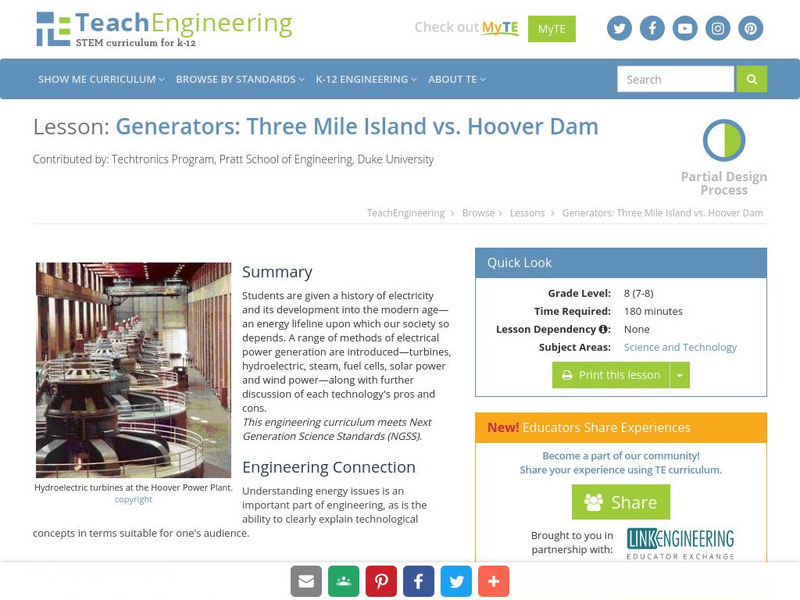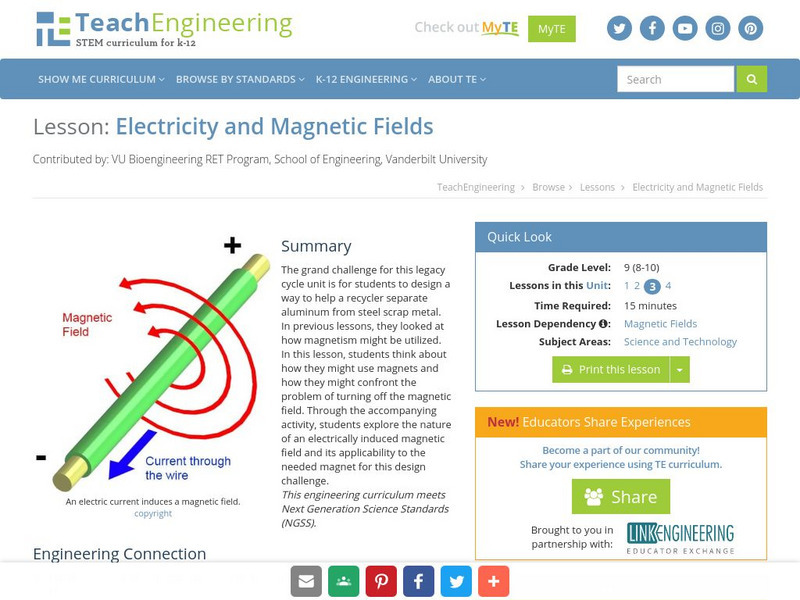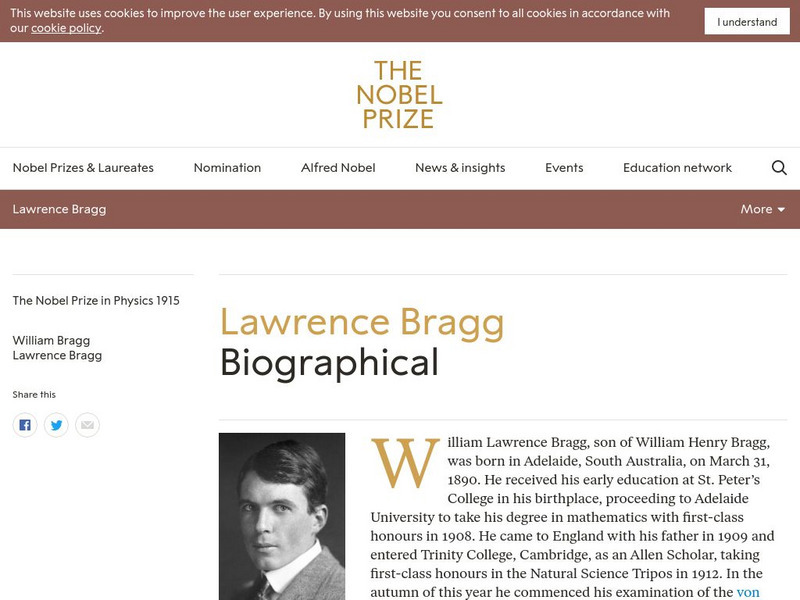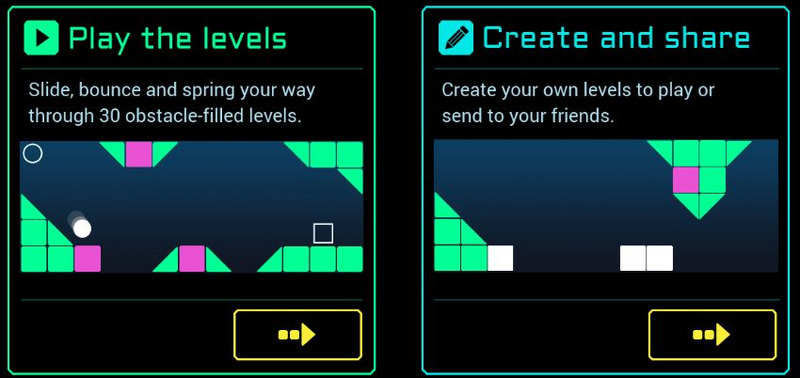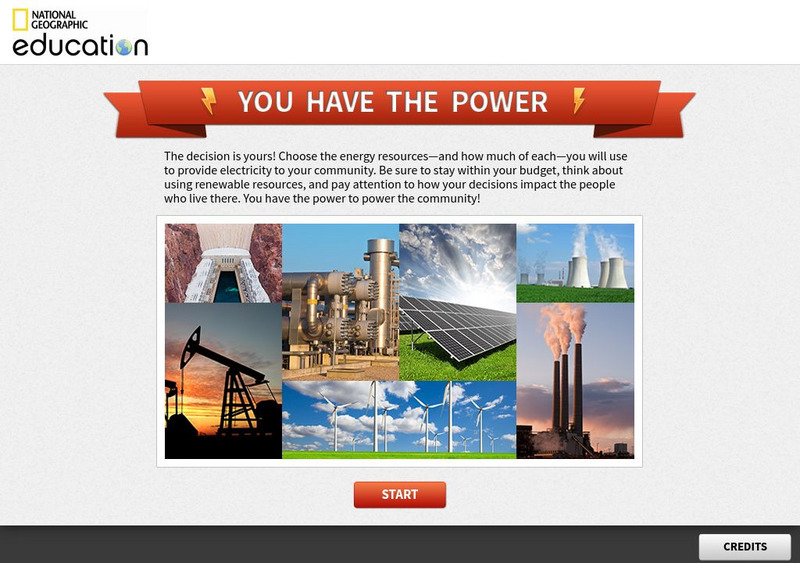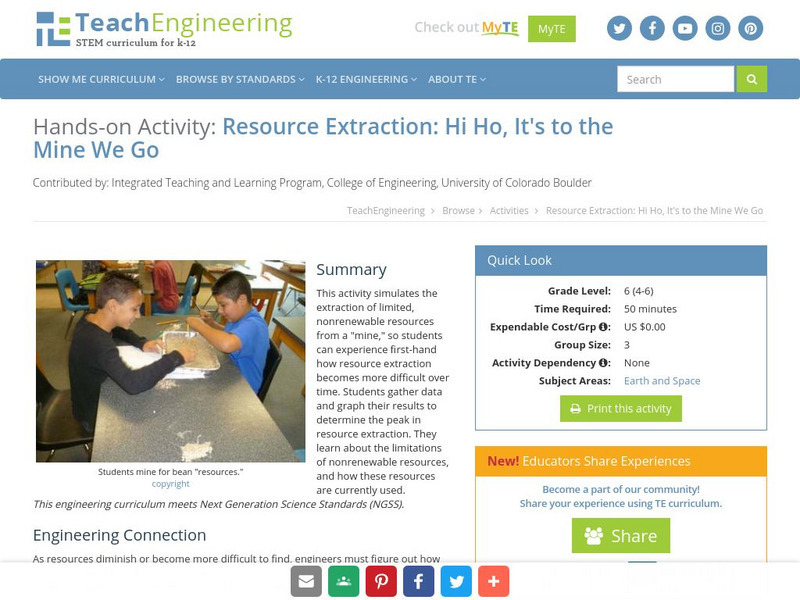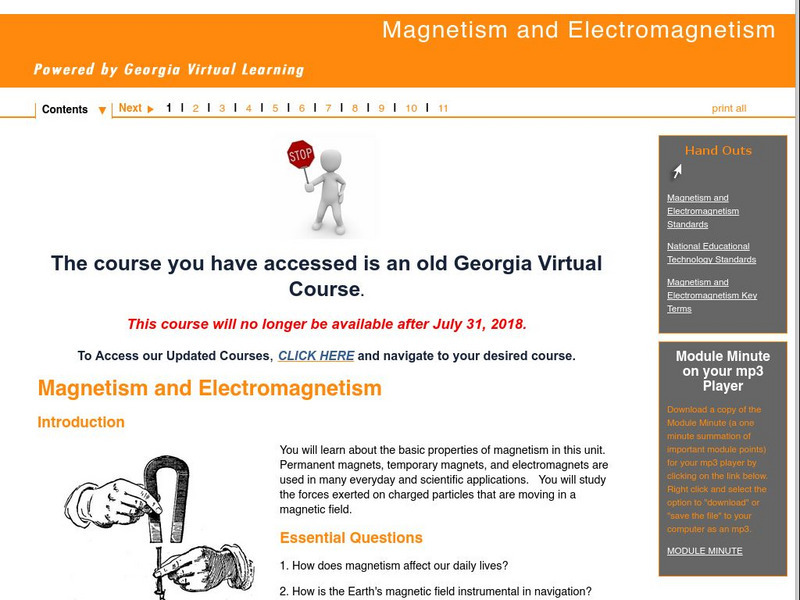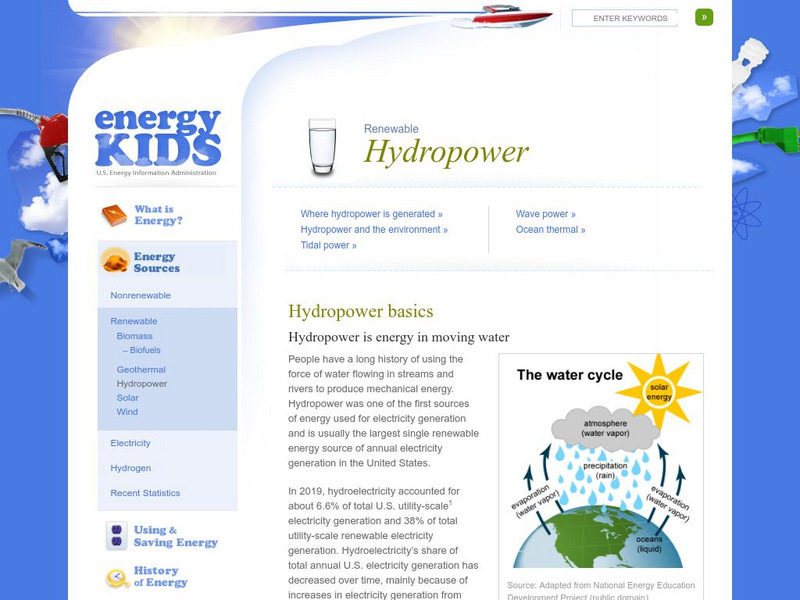Hi, what do you want to do?
TeachEngineering
Teach Engineering: Generators: Three Mile Island vs. Hoover Dam
Students are given a history of electricity and its development into the modern age lifeline upon which we so depend. The methods of power generation are introduced, and further discussion of each technology's pros and cons follows.
TeachEngineering
Teach Engineering: Particle Sensing: The Coulter Counter
Students are presented with a short lesson on the Coulter principle, an electronic method to detect microscopic particles and determine their concentration in fluid. Depending on the focus of study, students can investigate the...
TeachEngineering
Teach Engineering: What Is Bluetooth?
Students learn about electrical connections, how they work, and their pervasiveness in our world. Two specific skills explored are Morse code and the function of Bluetooth. Using bluetooth, they control LEGO robots remotely from Android...
TeachEngineering
Teach Engineering: How Does a Robot Work?
This lesson plan introduces electricity, batteries and motors using a LEGO MINDSTORMS NXT robot. The associated activity guides students to build a simple LEGO NXT set-up and see the practical implementation of the concepts discussed....
TeachEngineering
Teach Engineering: The Electric and Magnetic Personalities of Mr. Maxwell
Students are briefly introduced to Maxwell's equations and their significance to phenomena associated with electricity and magnetism. Basic concepts such as current, electricity and field lines are covered and reinforced. Through...
TeachEngineering
Teach Engineering: Electricity and Magnetic Fields
The grand challenge for this legacy cycle unit is for students to design a way to help a recycler separate aluminum from steel scrap metal. In previous lessons, they have looked at how magnetism might be utilized. In this activity,...
Chem4kids
Chem4 Kids: Plasma
Here you can learn all about plasma. Explore what plasma is, its basic characteristics, and how plasma is created.
Nobel Media AB
The Nobel Prize: The Nobel Prize in Physics 1905
This Nobel E-Museum website commemorates the work of Philipp von Lenard and his Nobel prize achievement. This detailed resource includes a biography, Lenard's Nobel Lecture, and the "The Nobel Prize in Physics 1905 Presentation Speech."
Nobel Media AB
The Nobel Prize: William Lawrence Bragg Biographical
The official Nobel biography of William Lawrence Bragg. the son of William Henry Bragg, who shared the 1915 Nobel Prize in Physics with his father. This article focuses on Bragg's science activities, positions, and achievements and honors.
Science Museum, London
Science Museum: Launchpad Online: Launchball
Use your knowledge of physics concepts like electricity, reflection, magnetism, etc. to complete interactive online puzzles.
National Geographic
National Geographic: You Have the Power
What factors are important to consider in order to make informed energy decisions? In this interactive, you select one of three locations and the energy resources and then try to provide 100% of that community's electricity needs while...
Utah Education Network
Uen: Flowing Electrons
For this fifth grade activity, students explore electric circuits by acting out different types, then construct circuits themselves.
Vision Learning
Visionlearning: Physics: Light Ii: Electromagnetism
Instructional module focusing on light and electromagnetism. Discussion includes historical discoveries that led to the understanding of the electromagnetic spectrum. Site also includes an interactive practice quiz and links relating to...
TeachEngineering
Teach Engineering: Sensing Air Pollution
Students learn about electricity and air pollution while building devices to measure volatile organic compounds (VOC) by attaching VOC sensors to prototyping boards. In the second part of the activity, students evaluate the impact of...
TeachEngineering
Teach Engineering: Hi Ho, Hi Ho, It's to the Mine We Go
This activity simulates the extraction of limited, nonrenewable resources from a "mine," so students can experience first-hand how resource extraction becomes more difficult over time. Students gather data and graph their results to...
Massachusetts Institute of Technology
Mit: Open Course Ware: Courses: Physics: Electricity and Magnetism
College-level physics course highlighting electromagnetism. This course also includes a wide variety of other physics topics including lightning, electrocardiograms, metal detectors, and atom smashers, to name a few. Course includes a...
Georgia Department of Education
Ga Virtual Learning: Magnetism and Electromagnetism
In this interactive learning module, students learn about the basic properties of magnetism. Practice problems are provided for ongoing assessment.
CK-12 Foundation
Ck 12: Cell Potentials
[Free Registration/Login may be required to access all resource tools.] Students will discover how an electrical potential is generated in an electrochemical cell, and then they will calculate the standard cell potentials from a table of...
US Energy Information Administration
U.s. Eia Energy Kids: Hydropower: Energy From Moving Water
Of the renewable energy sources that generate electricity, hydropower is the most often used. Learn other interesting facts about hydropower as the pictorial illustrations bring the information to life.
Unite for Literacy
Unite for Literacy: Energy Conservation: Electricity
Read about where how the electricity to our homes is produced and why it is important to conserve energy. Book includes audio narration in nine additional languages with text in English.
Unite for Literacy
Unite for Literacy: Energy Conservation: Off, On, Off
Learn about light switches and how to save electricity when they are turned off. Book includes audio narration in nine additional languages with text in English.
Other
American Coal Foundation: Lesson Plan: Conserving Electric Energy
Lesson plan focuses on electricity use and energy consumption, while engaging students in a hands-on activity that helps them comprehend the effects of regulation and conserving energy resources.
Other
American Coal Foundation: The United States of Energy
Help students learn about coal and its role in energy and electricity. The United States of Energy is a complete classroom program that allows students to learn about the many energy sources that power the United States and includes...
Other
American Coal Foundation:lesson Plan:how Much Does It Cost to Light the School?
Lesson explores where electricity comes from, how much it costs, and the amount of coal that is used. Students will relate these concepts to how much coal is needed to light their school/classroom for one hour.





